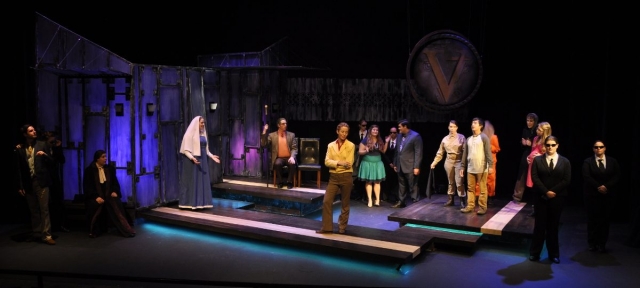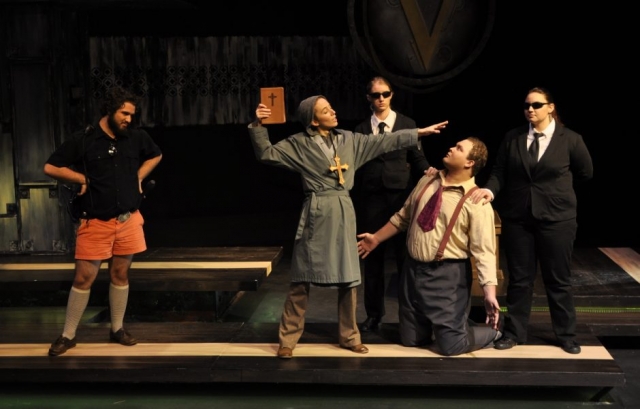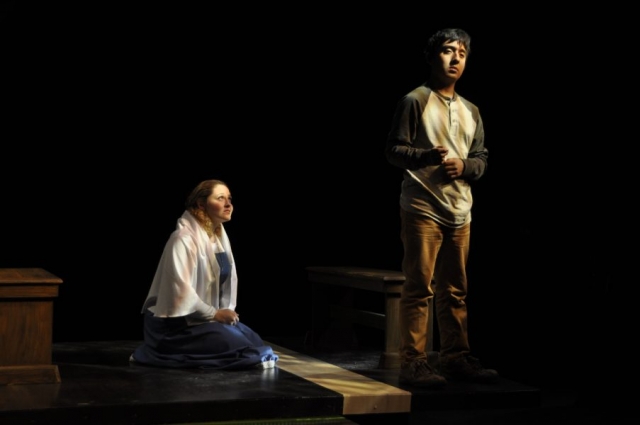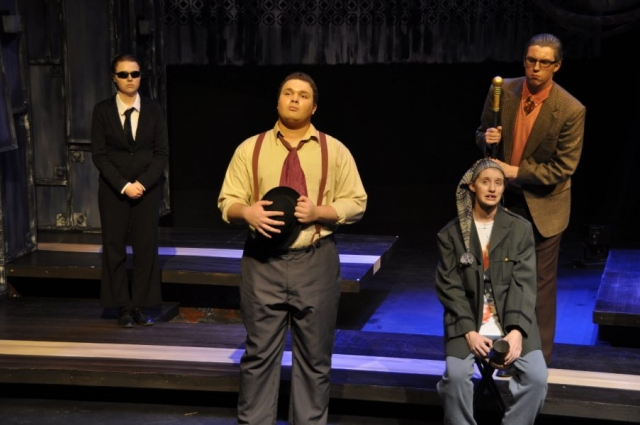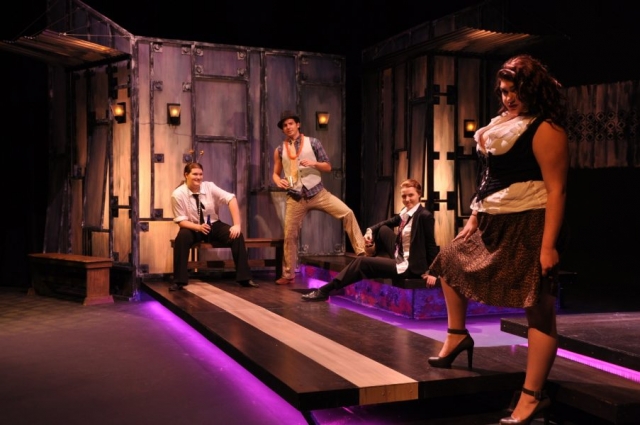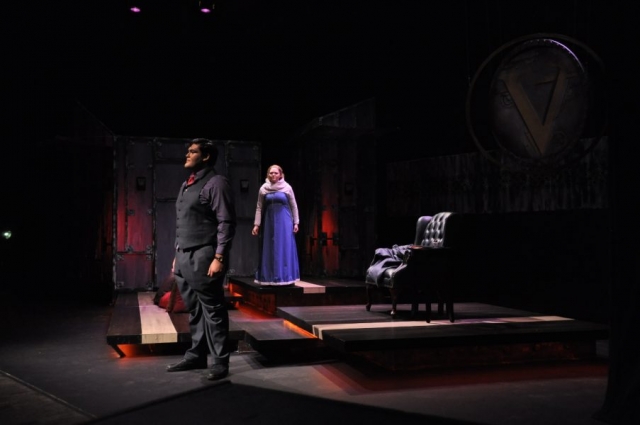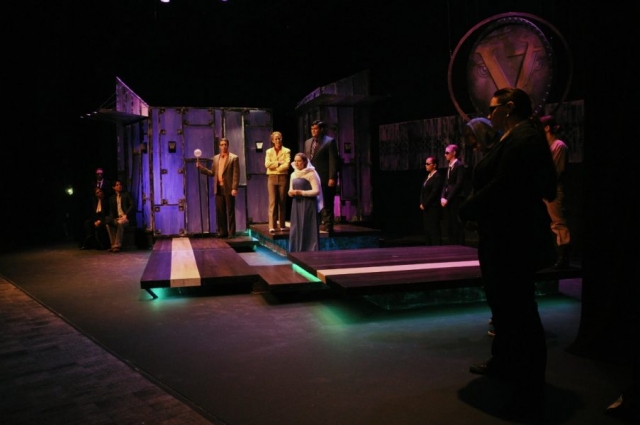
Measure for Measure is widely judged to be Shakespeare’s “problem play” – a problem not only for its mixed genre (is it a comedy, a tragedy, or something else?) but for its contradictions and swift deus ex machina ending. Some scholars consider this to be only a first draft of the play shown to Shakespeare’s audiences; others believe it has been rewritten, set in Vienna even though the characters’ Italian names are retained.
In brief, the plot of the play: The Duke, is getting political pressure to restore law and order and morality to his dukedom. He wants to preserve his image as a nice guy, and so appoints a conservative enforcer, Angelo, to take his place while he goes abroad (though in reality, he disguises himself as a friar in a local church so he can keep an eye on things). One of Angelo’s first acts is to enforce an old law no one follows very strictly any more, and that is against premarital sex. And so Claudio is sentenced to beheading for getting his fiancee Julietta pregnant before they are married. Claudio sends a message through his friend Lucio to his sister Isabella (about to take her vows and become a nun) to plead for his life in private with Angelo. However, Angelo feels he needs to set an example with Claudio. Isabella continues to plead, and Angelo offers her a deal: if she will sleep with him, he will pardon Claudio. Claudio condemns Angelo for the offer but urges his sister to go through with it. The Duke concocts a plan to give Angelo the green light but for Isabella to switch places with Marianna, the fiancee Angelo formerly dumped. Angelo decides not to honor his deal and behead Claudio anyway, but another subterfuge is employed to save Claudio’s life, until at last it takes the Duke to return to resolve all these ornate schemes and see that justice is done – or is it?
Some more modernist/formalist directors in the past have been known to edit out the comic scenes and even entire characters, in order to better streamline and unify the play’s action to suit modern tastes. We chose in this production to present it pretty much in its entirety. Our conceptual approach was to use a set that was flexible and conducive to multiple settings, conveyed through blocking and prop placement, with costumes and sound designs that were eclectic and iconic, rather than being tied to one specific place and time. This made for an environment consistent with the looseness of genre and action. Within this physical space, we suggested a corporate environment for Vienna (using the Anglicized pronunciation “Vy-Anna” to bolster that interpretation), complete with a corps of “men-in-black” who played the roles of servants and attendants – again, suggestive of both government agents and corporate security.
Credits: Scenic and Lighting Design by Krista Franco, Costumes by Rachel Markunas, Sound by Joe Palermo. Stetson University, November 2014.

